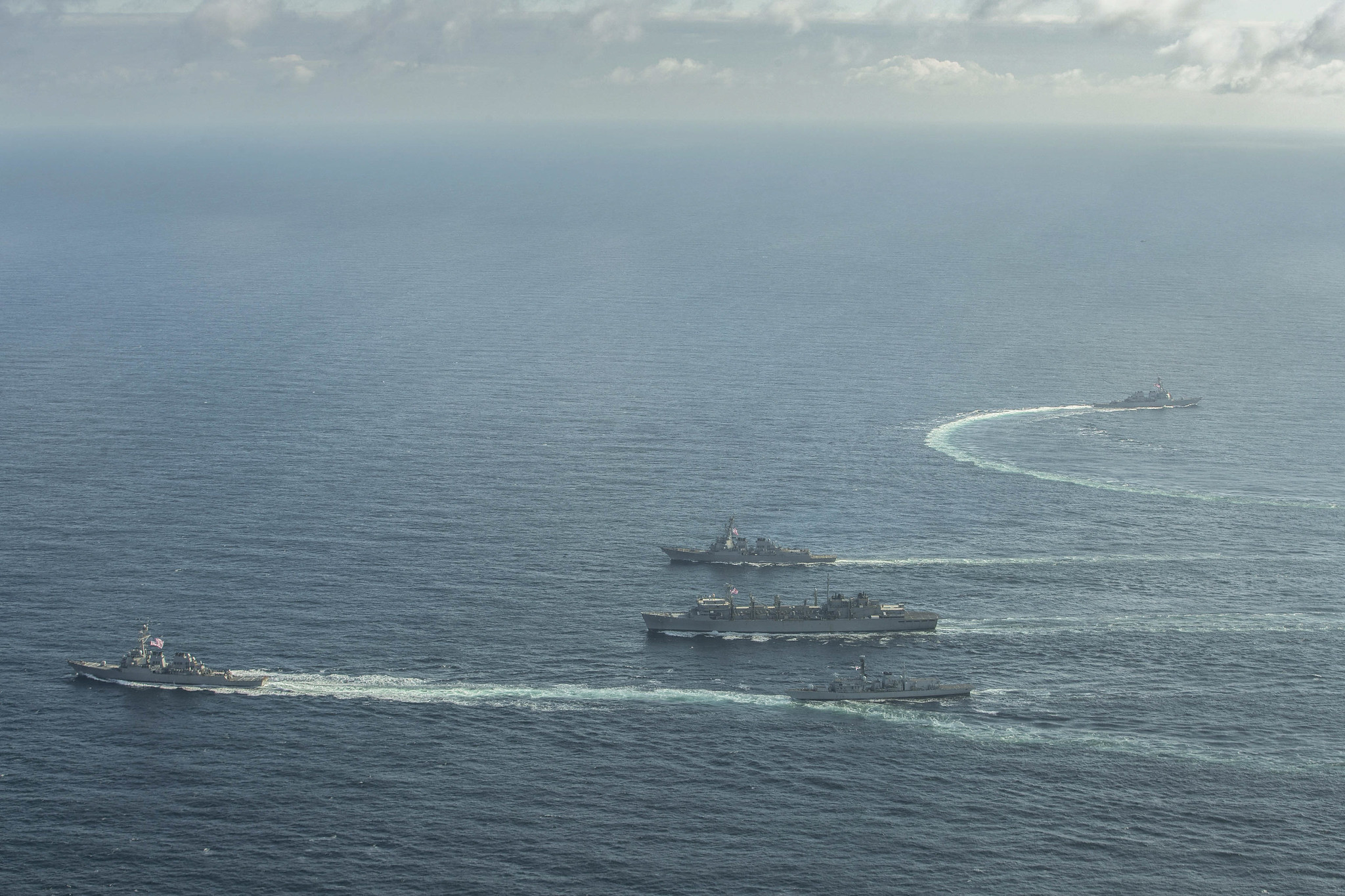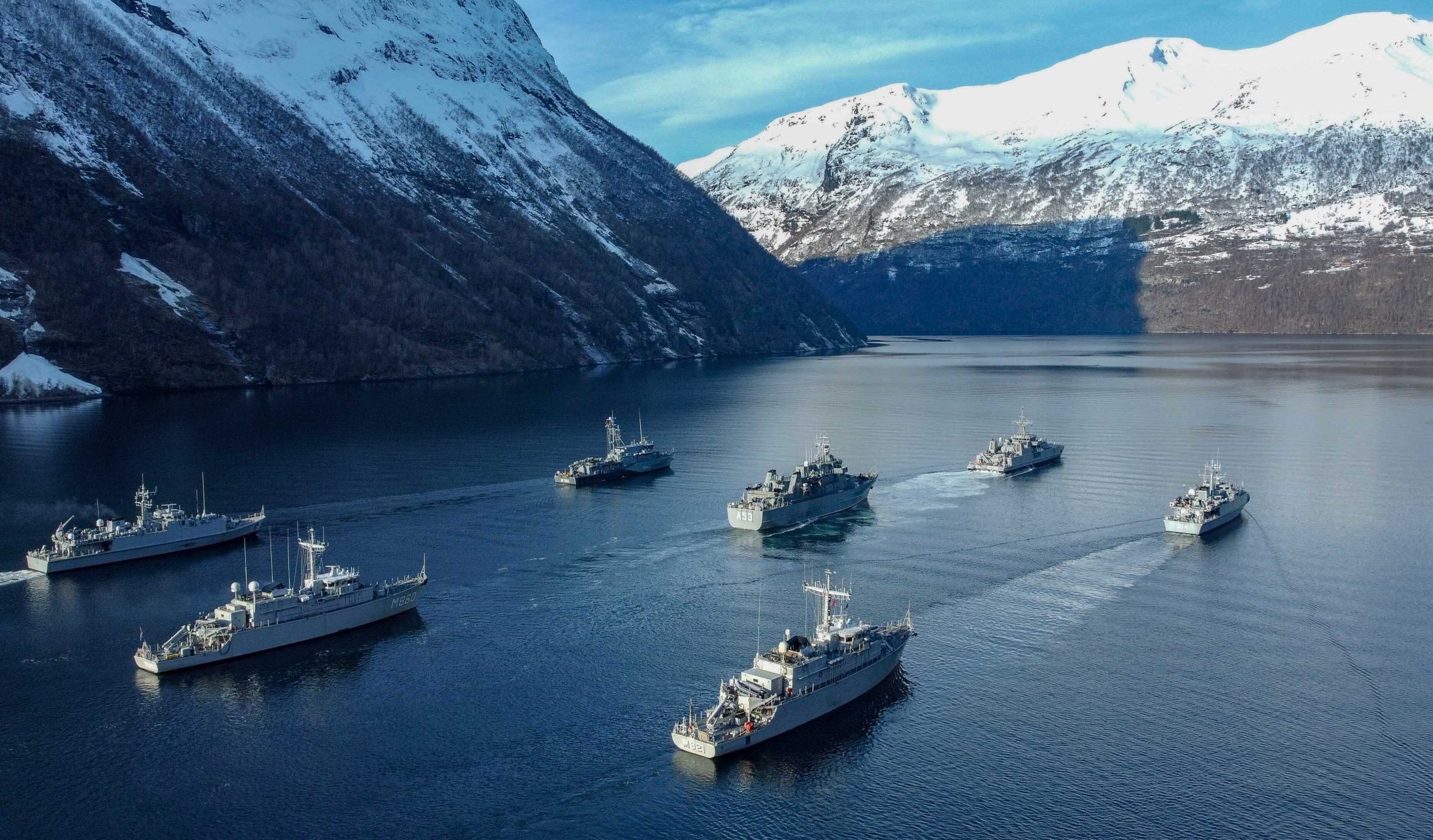The future of US Arctic interests will be written in its naval movements
Why the actions of the U.S. Navy will be a good indicator of future U.S. security policy in the Arctic.

Up until February 24, 2022, a primary U.S. policy objective for the Arctic was to sustain the status quo. Despite the flurry of Arctic strategies from U.S. agencies in recent years, in practice, regional policy tended towards preserving business as usual: cooperation with all Arctic nations where possible, limited defense investments where necessary, and an emphasis on sustainability and economic development.
But Russia’s invasion of Ukraine has upended the status quo in European security, and given the recent pause on Arctic Council engagement, there is every reason to expect it will do the same for the Arctic. Exactly how the region will settle into a new normal will only become clear with time. But we likely need not wait too long to see American policy preferences manifest in the Arctic. Because of the important role maritime engagements play in U.S. Arctic policy, as well as the U.S. Navy’s ability to redeploy rapidly and signal U.S. intentions, it’s likely some of the first visible indicators of changes in U.S. policy will come in the maritime domain.
In the post-Cold War era, U.S. maritime Arctic presence has often been episodic, particularly U.S. Navy surface operations north of the Greenland-Iceland-United Kingdom Gap. Lately, the Navy has advertised these periodic activities as symbolizing the Navy’s return to Cold War missions in the North Atlantic. Arctic exercises and operations will likely continue to serve as signals of U.S. intentions, and we have already seen some indicative shifts. In late February, four U.S.-based destroyers deployed to Europe, marking what USNI News assessed to be the highest regional force concentration since at least 2018. Partially including those forces, in March and April alone, the U.S. Navy has executed its biannual ICEX submarine event, NATO hosted a massive Arctic event with a maritime force presence off the coast of Norway (Cold Response), and Iceland hosted a U.S.-planned multilateral exercise in the North Atlantic (Northern Viking). Participants dubbed Cold Response the largest Arctic exercise since the Cold War, usurping a title only recently held by Trident Juncture (2018). If Russia’s hostilities cause the U.S. to increase its operational interest in the Arctic, further changes in exercise size, participation, or frequency would be clear markers to watch.
Maritime operations are also good measures for assessing the evolving role of NATO in the Arctic, as Russia’s invasion may critically reshape longstanding debates on the alliance’s political footprint in the region. NATO has long been operationally present in the Arctic. Alliance members — and Russia — ring the Arctic Ocean, making it clear that hostilities in other parts of the European theater could easily spill over in NATO territory further north. Likewise, the recent NATO exercises in the High North underscore a direct operational relationship between the alliance and the Arctic. At least part of the Arctic has always been, and will remain, a maneuver space for NATO forces.
Yet politically, opposition from several quarters has made NATO’s Arctic strategic and political leadership an awkward one. Canada, with internal waters claims to the Northwest Passage, has long been sensitive about opening the entire Arctic to NATO purview. Smaller Arctic nations, who have long prized Arctic-state primacy in regional decisions, have sometimes quietly expressed disfavor with inviting non-regional NATO members into the local fold. Russia’s invasion, leaving Sweden and Finland set to join the alliance, could force a serious shift in NATO’s political narrative on the Arctic by bringing all Western states with Arctic territory under the alliance umbrella. In two ways the Arctic would therefore be drawn even deeper into NATO’s political dynamics — through a direct expansion of NATO membership among Arctic states, and through greater treaty commitments linking those Arctic states to security elsewhere in Europe — most notably the Baltics.

Below the level of high politics, the extent to which the U.S. and its Arctic allies pursue more tactical integration will be another indication of a shifting U.S. focus in the region. Integration can take several forms. One would be more American contributions to the maritime arm of NATO’s Response Force that typically operates near the High North and Baltic Sea (Standing NATO Maritime Group 1, or SNMG-1). Of the six warships listed on the SNMG-1 roster as of mid-April, none were American. Separately, U.S. carrier strike groups (CSGs) occasionally deploy with cooperative deployers, allied warships that operate as an integrated part of the CSG. The current U.S. CSG deployed to Europe, the Harry S. Truman strike group, did so accompanied by a Norwegian frigate, HNoMS Fridtjof Nansen. More cooperative deployments with Arctic states are a clear avenue for allies to practice interoperability, even when they are steaming far from Arctic shores. We should keep an eye out for more participation by Canada, Norway, and Denmark in particular.
How the U.S. and United Kingdom navigate the distribution of Britain’s limited but high-end naval power is an evolving issue that may also shed some important light on U.S. Arctic priories, one that captures the complexity of U.S. global security commitments. Last fall, London heralded HMS Queen Elizabeth’s Pacific deployment as a marker of Global Britain’s shift to Asia. This month, by contrast, HMS Prince of Wales was in very different waters off the coast of the Norwegian Arctic volcanic island of Jan Mayen. The value of warships is that they need not be committed to permanent stations in one part of the world. And yet, as U.S. interests in Europe compete with those in the Pacific, more U.K. Arctic naval activity close to its home waters could show the extent to which the U.S. and Royal navies are choosing to burden-share in the region.
Finally, freedom of navigation operations (or FONOPs) — or at least discussion of them — will be important indicators of the direction of U.S. Arctic policy, particularly U.S. policymaker’s appetite for risk. There are many reasons why an Arctic freedom of navigation operation might be unwise, not least because U.S. icebreaker capacity is a major limiting factor. The National War College’s David Auerswald has warned of the risks inherent in Arctic FONOPs, as well as of the price of success, which could trigger still more assertive Russian behavior in the region. Meanwhile, as CNA’s Cornell Overfield has argued, it is not clear that Russia’s Northern Sea Route regulations are best challenged with a warship at all (as FONOPs would require). Nevertheless, FONOPs are often the nail to the U.S. Navy’s hammer, and we should look for increases in “Arctic FONOP” discourse as a proxy for how much the U.S.’s risk appetite may be shifting in the north in light of Russia’s activities in Ukraine.
U.S. officials recently announced a forthcoming White House Arctic strategy, the first revision to a national Arctic strategy since the Obama administration’s release from 2013. But we need not wait for the strategy’s completion to look for insights on how U.S. Arctic policy may be shifting in response to Russia’s hostilities in Ukraine. U.S. naval forces will be the canary in the coal mine for broader policies in the Arctic, serving as some of the most responsive and visible indicators of policy shifts if they come. Some forces have already moved to underscore American security interests in the region. Others may well follow suit. Watching this space will give observers clear and measurable indicators of how the current inflection point in European security is shaping and reshaping U.S. Arctic priorities into the future.
Joshua Tallis is a naval analyst at the Center for Naval Analyses specializing in Arctic policy and maritime security and the author of The War for Muddy Waters: Pirates, Terrorists, Traffickers, and Maritime Insecurity. The views expressed here do not reflect the official position of the Department of the Navy or the Department of Defense.
The views expressed here are the writer’s and are not necessarily endorsed by ArcticToday, which welcomes a broad range of viewpoints. To submit a piece for consideration, email commentary (at) arctictoday.com.